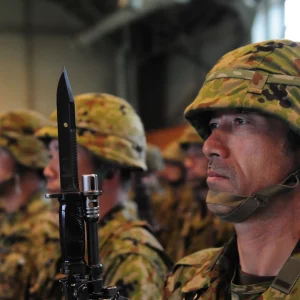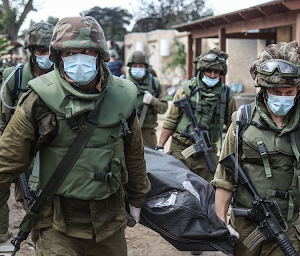
Every day news outlets around the world cover the latest horrors committed by the Islamic State (confusingly abbreviated as IS, ISIS, or even ISIL), and it seems the group’s expansion is unstoppable. However, despite its dramatic rise, information has begun to surface about the increasing dissent it faces, both internally and externally. This dissent ranges from Muslims living in Islamic State-occupied territory who do not agree with ISIS’ violent, unrealistic interpretation of Islam, external actors such as pro-government opposition groups, who resent the Islamic State’s leadership and actions, and internal actors, who chafe at the preferential treatment foreign recruits receive.
The Islamic State came to international attention last year when its “caliphate” seized control of a region larger than the United Kingdom, from Aleppo in Syria to Diyala province in Iraq. Its rigid ideology is adamantly medieval as the group strives to ignite a global apocalypse in order to return society to the time of Islam’s founding. As a consequence of this ideological rigidity, many people, including some within the Islamic State, feel disillusioned and inclined to dissent. Although such dissent weakens ISIS, the organization has steadfastly maintained its hardline stance.
The Islamic State depends on foreign jihadis to fulfill its mission. It can pinpoint its growth spurt to a specific day: July 5th, 2014, when the Islamic State’s leader, Abu Bakr al-Baghdadi, made a rare appearance in Mosul, Iraq to preach the importance of the month of Ramadan as a time to escalate their jihad against “the enemies of God.” Afterward, foreign recruitment swelled and now exceeds 20,000 out of a total 31,000 fighters.
However, the preferential treatment foreign jihadis receive, in the form of higher salaries and standard of living, has bred resentment among some domestic recruits. For instance, foreign fighters are paid in dollars, while Syrian recruits, known as munasir, or helpers, are paid in Syrian pounds which are worth much less. Additionally, according to an activist opposed to the Islamic State, foreign fighters live in cities – less frequent targets of air strikes because bombers try to avoid civilian casualties – whereas munasir have to patrol rural areas, which are more vulnerable to air attacks.
This unbalanced treatment not only angers Syrian munasir, who become more likely to defect, but has also proven inadequate at retaining foreign fighters’ loyalty, as many have deserted. Activists in the Syrian provinces of Deir al-Zour and Raqqa have described multiple encounters with foreign fighters paying locals handsomely to escape across the border to Turkey. According to Scott Stewart, vice president of tactical analysis at global intelligence and advisory firm Stratfor, previous terror organizations have also seen their recruits begin to uproot after experiencing losses, which erode the sense of purpose and excitement that inspired fighters to join the cause. For example, al-Qaeda members in Iraq got cold feet after receiving requests to perform suicide bombings. The same may happen in the Islamic State, which tends to utilize its recruits as human missiles.
ISIS is trying to discourage increasing desertions by meting out severe and public punishments. 30 to 40 male bodies, many of which appeared to be Asian and are thought to be jihadist fighters who attempted escape, were found in Raqqa in February. According to Marina Ottaway, a Wilson Center senior scholar in the Middle East Program, the Islamic State’s harsh reaction to the “sufficiently high” number of defections shows how serious a problem it is. Perhaps the very threat of swift and lethal retribution is a reminder of how cruel conditions are, and thus recruits will continue to desert. As each leaves, the Islamic State’s sense of invincibility, legitimacy, and long-term sustainability erodes as well.
Furthermore, there have been occasional reports of members within the Islamic State attempting to establish a coup. Recently ISIS arrested alleged Azeri ghulat extremists that were planning a coup against the Islamic State’s upper echelons. The leadership reacted swiftly, releasing a video of the ghulat and getting pro-ISIS social media to widely circulate their arrests. The group’s willingness to acknowledge such events shows it views them as more than outlier fringe threats and publicizes them to assert control.
In addition to facing internal resistance, the Islamic State has consistently been bombarded by the U.S., which has conducted 1,600 air strikes in Iraq since its campaign began last August. Moreover, American allies have launched 1,000 air strikes in Syria since last September. Military actions from other nations target the top of the Islamic State’s hierarchy, while individual resistance within occupied territories targets low-level jihadists. However, as long as viable alternatives are lacking and the fear of vicious retribution remains high, it is likely that resistance levels among individual citizens against the Islamic State will remain low. The greater threat to the Islamic State’s long-term existence is resistance not from local civilians, but from local oppositional groups.
Through repressing the population, the Islamic State may actually be providing recruits to vigilante groups and pro-government forces like the White Shroud, a Deir Ezzor-based vigilante group, and the predominantly Sunni pro-government Ba’ath Battalions, who have a known presence in Raqqa. Such groups’ attacks and assassinations of several Islamic State members are motivated by incidents like the recent execution of hundreds of Syrian al-Sheitat tribe members by ISIS for organizing resistance against the group. The Islamic State’s smothering of the uprising and massacre reports in mainstream media caused the tribe’s resistance to flatline. However, pro-government social media sources have reported that a number of al-Sheitat members have since allied with Syrian military forces in Deir Ezzor, opting to exercise resistance against the Islamic State in this capacity rather than fight alone. These pockets of resistance will become more effective and more difficult to control as they spread through the “caliphate,” and could play a significant role in dismantling the Islamic State’s power.
The Islamic State does not understand the people whose territory it occupies, and perpetuating its violent ideology will deepen the multiple schisms that exist between jihadis and civilians, subsequently strengthening organized resistance to the insurgency. The fractures between jihadis and Islamic State leadership are augmented by unrealistic demands, which have led foreign jihadis to desert in spite of the preferential treatment they receive and the threat of vicious punishment for leaving. All these combined – especially increasing attacks from domestic groups – will hurt the Islamic State’s long-term sustainability. These attacks from within the “caliphate” could damage the Islamic State more than those of foreign coalitions because they encourage others living in occupied territory to resist. Eventually, even the influx of recruits will not provide sufficient manpower to keep local resistance at bay. Given internal and external opposition to the Islamic State’s presence in Syria and Iraq, the group’s long-term prospects of creating their own medieval utopia seem bleak at best.




